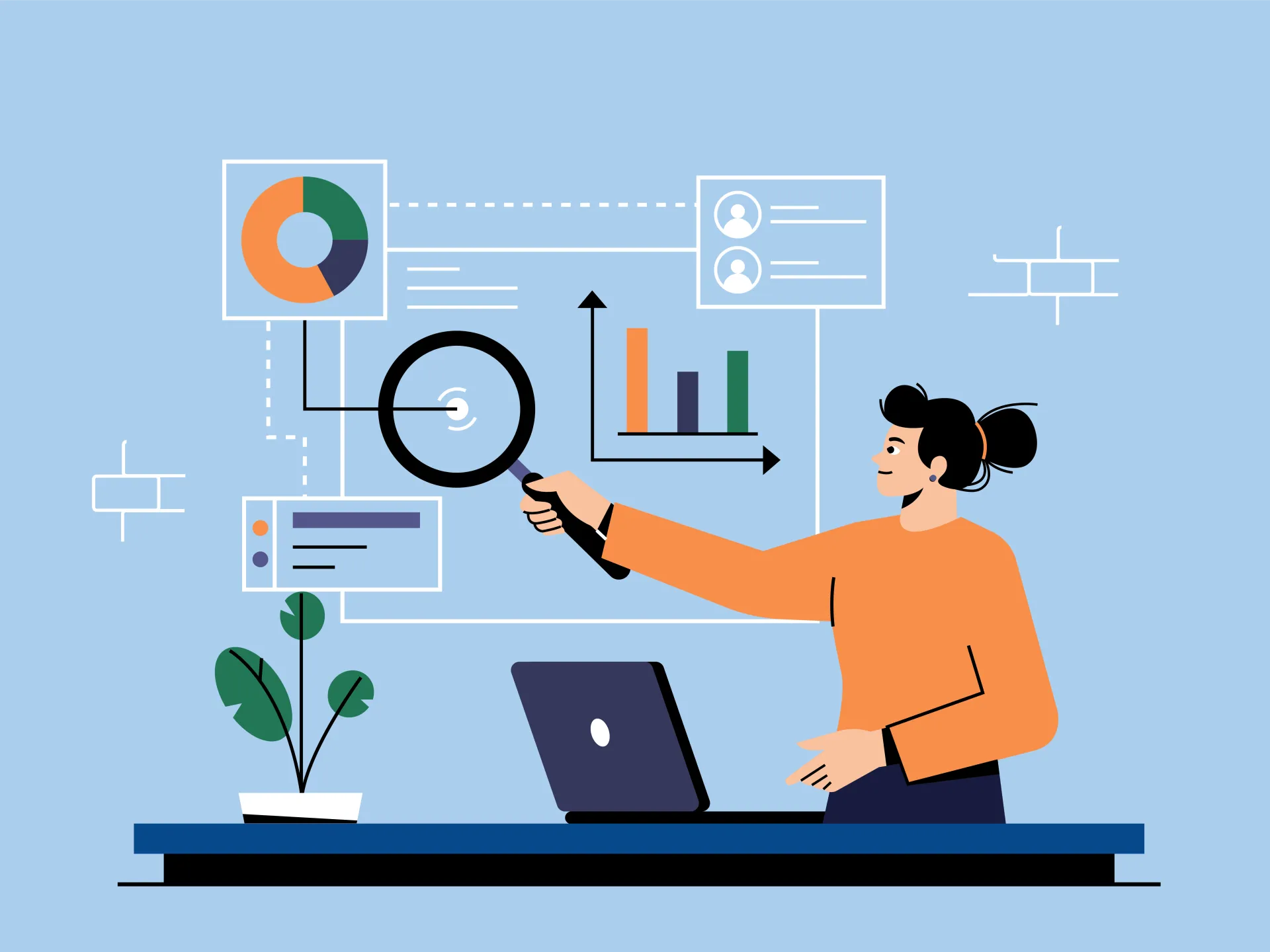Customers have hundreds of interactions with a brand, their website, and their ads before ever placing an order.
Understanding all the influences that led to the sale is more significant than knowing the converting landing page or the last click on an ad. How about getting a clear picture of how each marketing activity contributes to the bottom line? Social media posts, an article on a blog, or a web page workflow all play a part in the customer’s decision to buy from you.
The data you collect from customer interactions should help you make well-informed and data-driven decisions like allocating budget and resources to ensure you maximize ROI from all your marketing efforts.
Today the shopper’s journey is complicated, and without a sophisticated way to measure channels and assets that drive traffic, engagement, and sales opportunities, your job becomes much more challenging.
Attribution models help marketers understand the customer’s path to purchase. It’s important to note that what works for one brand may not make sense for you. You’ll need to consider the type of products you sell and the length of your sales cycles.
Let’s dive in.
First, you’ll need to understand the Attribution Window
An attribution window is when your marketing analytics solution will look for conversion triggers like ad clicks or views. Typically, the attribution window is between 7 and 30 days, but it can be configured for shorter or longer periods. If you sell a fast selling product like a beauty product or a fast fashion apparel, then a 7-day window might be appropriate. But if you are selling insurance, a 90-day attribution window may give you a better insight into the buyers’ journeys.
Why is it important?
If a click from three months ago is outside of your configured attribution window, it won’t be considered a touchpoint that assisted with a conversion event. If no ad clicks are reported during the attribution window, it will assume that the conversion is organic and not the result of an ad.
However, if a person clicks on your ad and visits your site on January 1st, as long as they place an order before January 30th, that ad can take credit for that conversion. How much credit the ad takes depends on how many other touchpoints were there along the way and what other media sources were involved.
Make sense?
So with that, let’s look at how credit can be attributed to various media sources.
1.) First Click Attribution
First-click attribution is when 100% of the credit is assigned to the ad or page where the visitor first discovered you. This model is an easy way to know what attracts people to your brand; however, it’s important to note that it overemphasizes top-of-the-funnel marketing efforts.
Let’s consider the following journey of a customer.
April 13th: Instagram Ad
April 21st: Google Ad
April 29th: Email
April 29th: Conversion
For this customer’s journey, the full credit is given to Instagram Ads because this is where the first click originated. Google Ads and Email don’t get any credit.
2.) Last Click Attribution
Last click attribution gives credit to the very last touchpoint where the conversion directly occurred. This model is used to measure the performance of your landing pages or the ad (or message) that got the user to act and convert..
Here’s how it would look.
October 16th: Snapchat Ad
October 18th: Pinterest Ad
October 21st: Organic
October 22nd: Snapchat Ad
October 22nd: Conversion
Last click attribution gives ALL of the credit to Snapchat Ads because that was the last click before the conversion.
3.) Equal Weight/Linear Attribution
In this scenario, equal credit is given to all the touchpoints. So if a customer has five separate touchpoints in the journey; 20% or ⅕ of the credit will be given to each source individually according to the number of clicks they accrued.
Facebook Ads (2 visits) = 40%
Facebook Organic (1 visit) = 20%
Email (1 visit) = 20%
Google Organic (1 visit) = 20%
4.) Any click attribution (aka Full impact attribution)
In this model, all touchpoints that assisted in a conversion accrue full credit for the final conversion. So this attribution over counts the total conversions.
Many big platforms claim to do last-click attribution, but most of them actually perform Any Click Attribution. The reason is that platforms like Google Ads or Facebook are not aware of the user interacting on any other platform besides their own. So what may seem to Google as a click on an ad and then a purchase, may have had a few more clicks coming from Facebook Ads, Snap Ads etc before that purchase. You might also read “How Big Platforms Attribute Conversions (and screw you over in the process)“
If you click on a Pinterest ad and are taken to a website, Pinterest will record the click. If you added Pinterest’s conversion tracking, then Pinterest will know that a conversion happened, but they can’t see conversion assists or the path to conversion. There are likely additional touchpoints that intervened up until the conversion; however, the credit will go to Pinterest.
Here is what the journey and conversion credit may look like:
June 3rd: Pinterest Ad = 1 credit
June 6th: Facebook Ad = 1 credit
June 7th: Google Ad = 1 credit
June 12th: Email = 1 credit
June 12th: Conversion
Here each platform, Pinterest, Facebook, Google, and Email Marketing Platform e.g. Klaviyo will claim the full credit for the conversion. This attribution model will also attribute full credit to those media sources.. Ultimately you have four accumulated credits for one single conversion.
It’s no wonder 34% of marketers don’t trust the data they see from publishers. This number will only grow larger, and marketers will continue to battle against over-reporting advertising performance.
5.) View-Through Attribution
Many marketers, junior to experienced, don’t really understand View-through attribution very well. While people talk extensively about it, they can’t explain how to actually do it.
View Through attribution measures a person who has seen an ad, didn’t click on it but was influenced by the ad and later returned directly or through an organic media source to make a purchase.
Every ad impression could impact an individual and can spur them to a conversion. This is how linear TV ads and other non-direct-response advertising works. With direct-response advertising also, it’s not necessary that a person will alway click on the ad. So a person may see an ad in their Facebook feed and later search up the business on Google and click on the organic result, and may end up converting. Facebook and other ad platforms could track each ad impression and then can track associated conversions. But Facebook doesn’t separate out such conversions in its own bucket, so it remains a mystery how Facebook is taking credit for conversions. This problem is even more acute with iOS14 update that has caused Facebook’s tracking to falter.
Platforms like LayerFive have devised machine learning algorithms that estimate quite accurately such view-through attribution to account for the full credit to media sources e.g. Facebook.
6.) Weighted Attribution
Such attribution models provide a certain weight to every click. For example, 40% to the first click, 20% to the second click, and 40% to the last click. The percentages can be configured to your liking.
7.) Data Driven Attribution
Data driven attribution applies heuristics and machine learning methods to determine the weights for each click. So in one case this attribution may assign most of the credit to the first click but in another case most of the credit may go to the last click.
While such models hold a lot of premise, these may get complicated pretty fast and proving value of such models over a linear or weighted attribution model is generally not easy.
In Conclusion
The wrong attribution platform will give you the wrong picture, and relying solely on the big publisher to attribute and report accurately is wishful thinking.
The attribution model you choose needs to align with your goals, and the data needs to be available to back it up. “Any click attribution” may be good if you are comparing ad platform reported performance. To check the effectiveness of your top of the funnel, you may want to check out first-click attribution based performance, while trying to understand what drove the conversion, you may want to rely on the last-click attribution. Finally, if you need to report to your execs, a linear attribution model may give you a good accounting for all the conversions.
Implement a solution that molds to your strategy and is fluid enough to evolve and scale with it, no matter how much it changes.
At LayerFive, we consistently achieve over 94% coverage of conversions. We track every click to your website or app with first-party tag and integrate with your ecommerce platforms like Shopify, and other marketing and CRM platforms like Salesforce, Klayvio, and many more.
We’ll collect, clean, and comprehensively report your marketing analytics and attribution data with accuracy.
Schedule a demo today to learn more about how we help our clients achieve a 74% increase in revenue from digital advertising.Schedule a Demo



